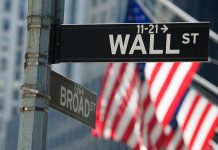Normally, higher rates would be seen as good for the banking sector. So there is understandably some concern about the financial markets since Australian banking shares are down considerably despite a broad consensus that the RBA will raise rates tomorrow (or late tonight, depending where you are on the globe).
There is a global issue, and it might give the RBA a little pause. Rumors circulated on Sunday that a “major bank” was “on the brink” of collapse. This sent global banking shares down. It was also reported that the BOE was looking at Credit Suisse, given the shake up in global markets. The sudden moves in the pound and yen have made things particularly difficult for banks.
What it means for the RBA
The one thing that could significantly disrupt central banks’ plans with regards to monetary policy is the risk of failure of a major bank. That would be equivalent to a “Lehman Brothers” event, but on a global scale. Even if it isn’t a bank in the country, the loss of confidence in the financial industry could shake policy, and force central banks to inject liquidity.
However, it’s just rumors at this point. Putting that aside, the RBA is broadly expected to raise rates by 50bps, and continue tightening. There is a discrepancy with the projections, though. 97% of Australian economists forecast 50bps, but only 75% of international economists do.
What it means for the markets
In the scheme of practical effects, the solid consensus implies that the rate hike is fully priced in. What level of uncertainty there is around the outlook. A recent survey by Bloomberg showed that a majority of international economists believe this is the last “outsized” hike by the RBA, and that only 25bps will be forthcoming at the next meeting.
Australian economists aren’t so sure, with more betting on stronger action by the Reserve Bank. They point to inflation still rising and data remaining strong (if the housing situation isn’t considered). Another point brought up is that the RBA could go for a one-and-a-half hike, since it is at an “unusual” rate that isn’t a multiple of 0.25. Thus, there is a growing call for a “consensus” hike of 40bps at the next meeting, splitting the difference between 25 and 50.
It’s not all up to them
As for the currency, the major obstacle is that the Fed keeps raising rates faster than any of the other majors. Even the most hawkish scenario for the RBA leaves the interest rate gap widening. And with inflation still rising in Australia, while US inflation (at least on the headline) is receding, then the real spread is getting even wider.
A post rate rally in the case that Lowe gives clear indications that more than 25bps is likely at the next meeting, might sputter out quite quickly. If the RBA fails to be as hawkish as the Australian economists expect, then the currency could slide even further.















